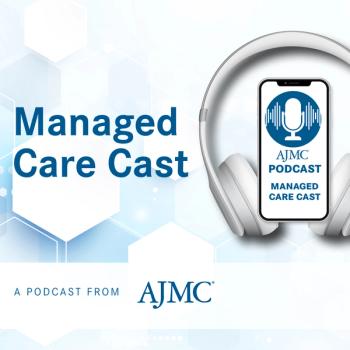
Dr Michael Thorpy: Shared Decision-Making Is Important for Managing Narcolepsy
Personalizing treatment for narcolepsy requires shared decision-making between patients and clinicians to understand the most important symptoms that need to be treated and the right therapy, said Michael Thorpy, MD, director of the Sleep-Wake Disorders Center at Montefiore Medical Center and professor of neurology at Albert Einstein College of Medicine.
Personalizing treatment for narcolepsy requires shared decision-making between patients and clinicians to understand the most important symptoms that need to be treated and the right therapy, said Michael Thorpy, MD, director of the Sleep-Wake Disorders Center at Montefiore Medical Center and professor of neurology at Albert Einstein College of Medicine.
Transcript
How can clinicians ensure their patients’ voices are heard when it comes to aligning treatment goals for narcolepsy?
We're really entering into a stage of personalized medicine for patients with narcolepsy, and it's most important that clinicians really listen to their patients, understand the symptoms that they're having, the severity of those symptoms, and which are the most important ones. Narcolepsy has a number of different symptoms associated with it—there can be the excessive daytime sleepiness, the cataplexy, or the disturbed nocturnal sleep. And it's good for the clinician to recognize which of those conditions most affect the patient, and which are the ones that the patient feels that they need to get under control.
Because the management of narcolepsy involves a lot of new medications, it's important that the patient understands the differences between the medications and the treatments that are available to them. The clinician really needs to move into shared decision-making with the patient when it comes to the management of narcolepsy. Very often the treatment of narcolepsy involves not just one medication, but it may involve multiple medications. The patients need to understand that as to the interactions potentially, between these medications, and the interactions with other medications that they may be taking.
Narcolepsy is also associated with a lot of comorbidity illnesses—psychiatric illnesses, anxiety, and depression. Patients may be on medications to treat those conditions, and patients need to understand how their narcolepsy medications will interact with those medications. There's also new evidence with regards to comorbidities and cardiovascular disorders and some of the newer medications that can have an adverse effect upon cardiovascular parameters.
So, again, the most important thing in treating patients is to have that patient involvement and their understanding of not only the symptoms but also the treatments that are available, and then join into a shared decision-making process to get the best treatment for them.
How can clinicians encourage their patients to share as much as possible about the symptoms they are experiencing?
The important thing is education. A lot of patients with narcolepsy really don't understand the symptoms, and they've often lived with them for a number of years. They may underestimate the effect of these symptoms upon their daily life. It's important for the physician to address the different symptoms of narcolepsy and to see how they impact the patient's quality of life, their work, and their interpersonal relationships. So, discussing the impact of those symptoms is the most important thing in deciding which is the best direction to go in terms of management.
Newsletter
Stay ahead of policy, cost, and value—subscribe to AJMC for expert insights at the intersection of clinical care and health economics.








































